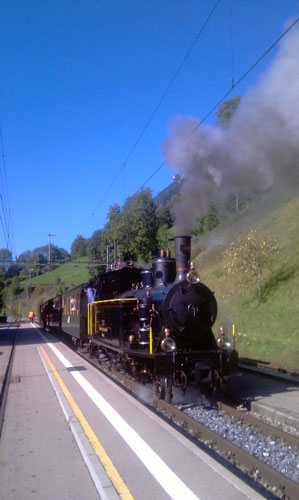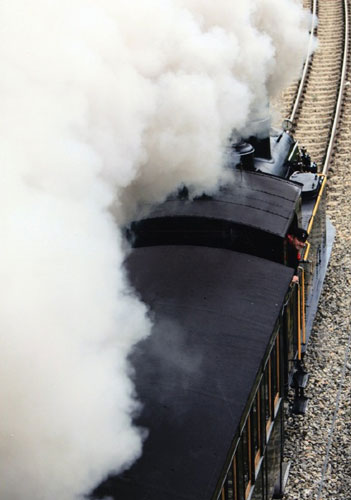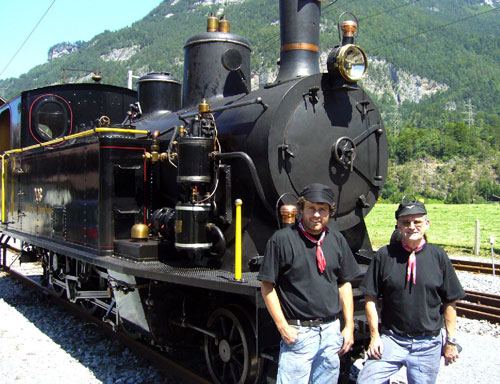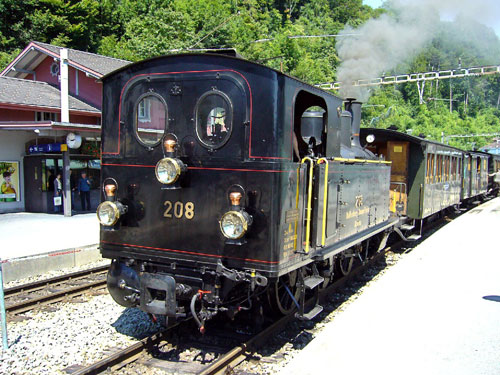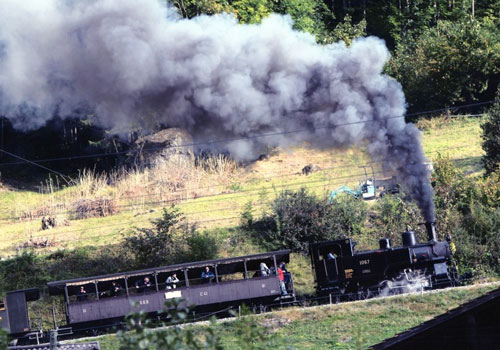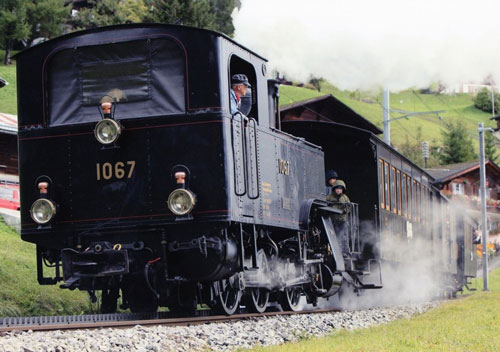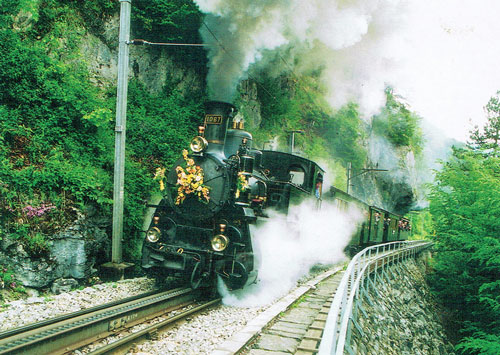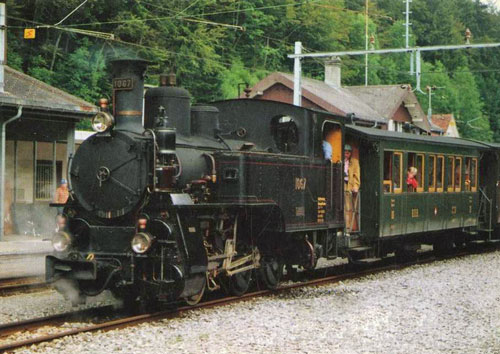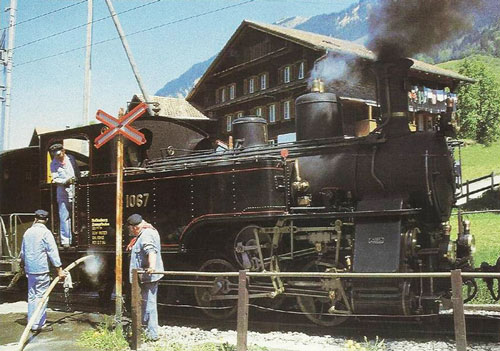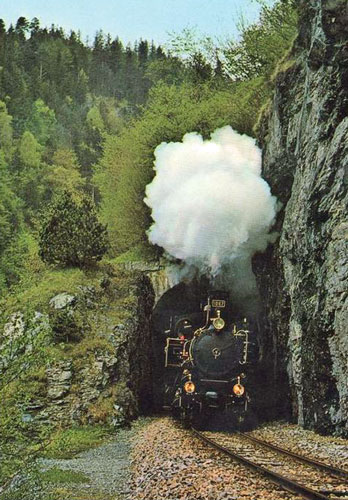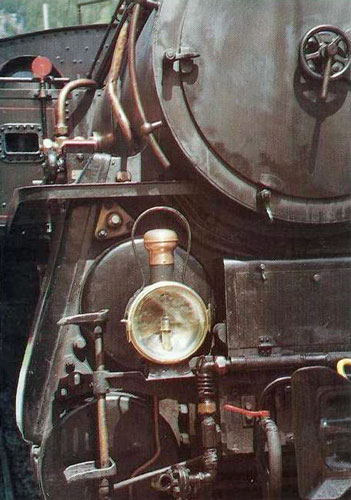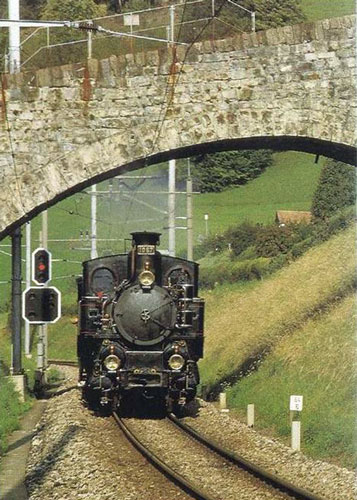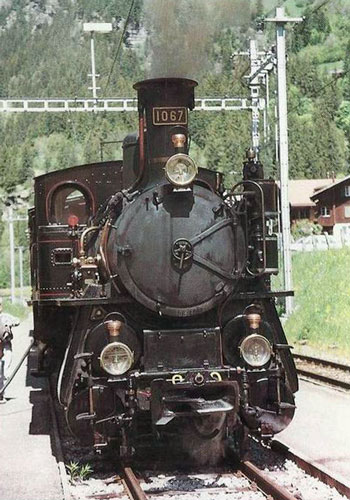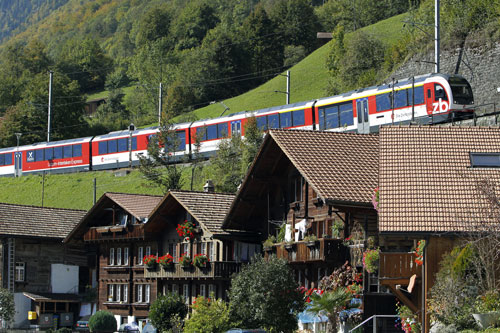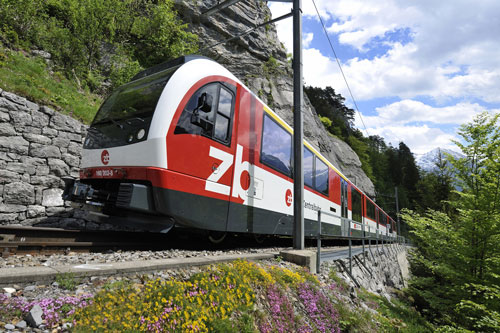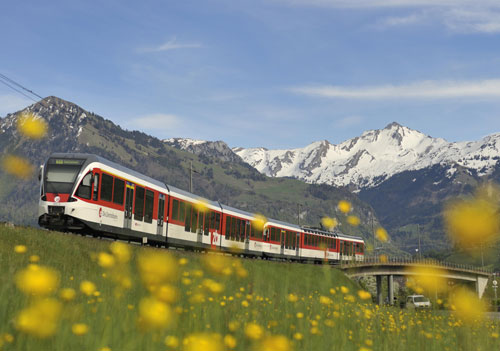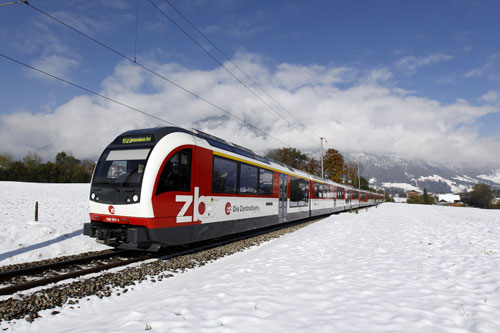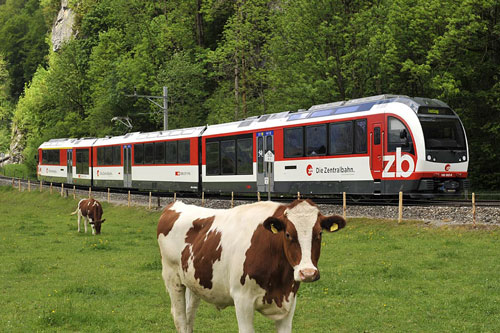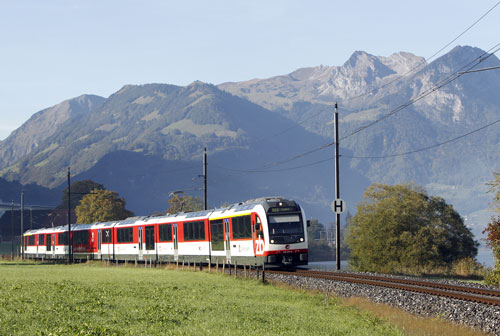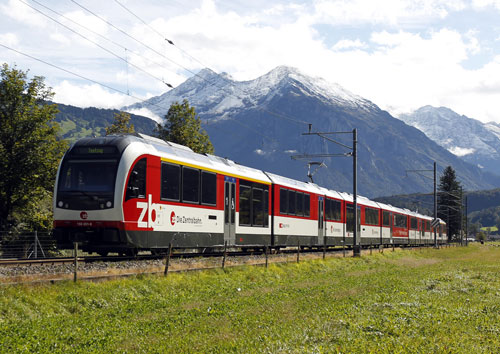|
|
|
| |
Brünig Bahn of the Swiss Federal Railways - SBB
Luzern-Stans-Engelberg Bahn - LSE
All images link to larger
copies which will open in a new window/tab
|
|
|
The Zentralbahn is a Swiss
railway company that owns and operates two connecting railway lines in
Central Switzerland and the Bernese Oberland. It was created on January 1,
2005, with the acquisition of the independently owned Luzern–Stans–Engelberg
Railway, and the Brünig line of the Swiss Federal Railways. The company has
its headquarters in Stansstad
(Ref: Wikipedia)
|
|
|
|
|
|
| |
|
|
Swiss Railways
Platform 5 European Handbook No.5 by Haydock,
Fox, Garvin
Lokomotiven & Triebwagen der Schweizer Bahnen
Band 3: Privatbahnen Berner Oberland by Peter Willen
(Orell Fuessli Verlag)
http://www..com
h
h
|
|
|
|
|
Brünig Bahn of the Swiss Federal Railways - SBB
Luzern-Stans-Engelberg Bahn - LSE
All images link to larger
copies which will open in a new window/tab
Brünig Bahn of the Swiss Federal Railways - SBB
The Zentralbahn is a Swiss
railway company that owns and operates two connecting railway lines in
Central Switzerland and the Bernese Oberland. It was created on January 1,
2005, with the acquisition of the independently owned Luzern–Stans–Engelberg
Railway, and the Brünig line of the Swiss Federal Railways. The company has
its headquarters in Stansstad
The Brünigbahn is a metre gauge rack railway line that links Lucerne, with
Interlaken, in the canton of Bern, via Alpnachstad, Giswil, Meiringen and
Brienz. The line passes over the Brünig Pass, using sections of the
Riggenbach rack system to overcome the gradients, but with most of the line
operated by normal adhesion methods. The line is 74 kilometres (46 mi) long.
It opened in stages between 1888 and 1916, and was, between 1903 and 2004,
the only narrow gauge line of the Swiss Federal Railways. Today the line
forms part, along with the Luzern–Stans–Engelberg line, of the Zentralbahn
railway company.
The line is served by hourly InterRegio trains that operate the full length
of the line, together with hourly Regio trains that operate between
Interlaken and Meiringen, and twice-hourly trains between Lucerne and
Giswil. The latter trains operate as Lucerne S-Bahn line S5. The section of
line between Hergiswil and Lucerne is shared with trains on the
Luzern–Stans–Engelberg line, including a further InterRegio train per hour,
and the twice-hourly Lucerne S-Bahn line S4.
(Ref: Wikipedia)
Brünig Line Steam Operation
The line was constructed by the Jura–Bern–Lucerne
Bahn (JBL), which opened the section between Brienz over the Brünig Pass to
Alpnachstad in 1888. Initially, the line relied on steamships on Lake Brienz
and Lake Lucerne for its onward connections. In 1889, the line was extended
from Alpnachstad to Lucerne, giving connections to the rest of the Swiss
railway network. In 1891, the JBL became part of the Jura–Simplon Railway
(JS). In 1903, the JS became part of the Swiss Federal Railways (SBB). Only
in 1916 did the last section of the current line, between Brienz and
Interlaken, open. This allowed through trains to operated from Lucerne to
Interlaken, and provided an easy interchange with trains to Bern and beyond.
Initially six G3/3 (0-6-0T) adhesion locos JBL 301-306 were delivered by SLM
to the Jura–Bern–Lucerne Bahn between 1887-1894 for the adhesion sections of
the route. These were joined by eight rack HG 2/2 (0-4-0T) locos, also SLM,
numbered JBL 351-358. These were renumbered JS 901-906 and JS 951-958 by the
Jura-Simplon Bahn, who then bought three more of the adhesion locos JS
907-910 and 951-963 between 1891-1901. The SBB renumbered the locos 101-110
and 1001-1013. More powerful rack HG 3/3 locos 1051-1068 were bought by SBB
from SLM between 1905-1910, followed by one in 1926. Adhesion H 3/4 (2-6-0T)
locos Nos.201-218 were acquired new and from other railways between 1905 and
1926.
(Ref: Schmalspurparadies Schweiz by Scheers/Wall)
Postcard of JBL 352, one of the initial HG 2/2 rack
locomotives
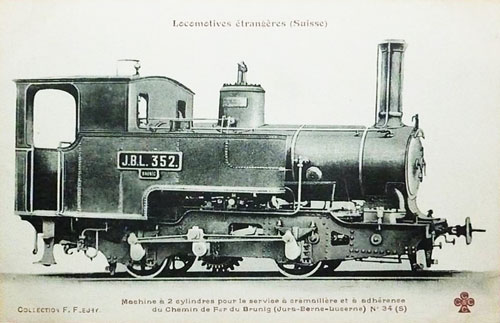
Postcard of Brunig Bahn 1052, one of the later more
powerful HG 3/3 rack locomotives
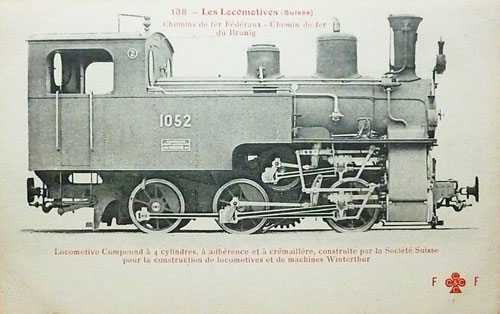
Other old postcards of Brünig steam locomotives
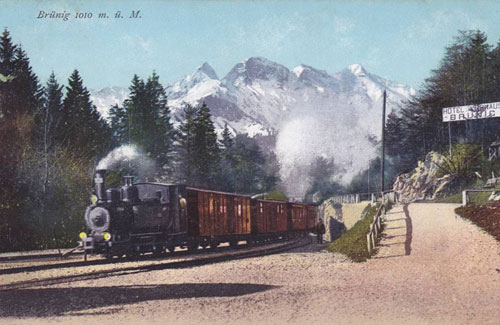
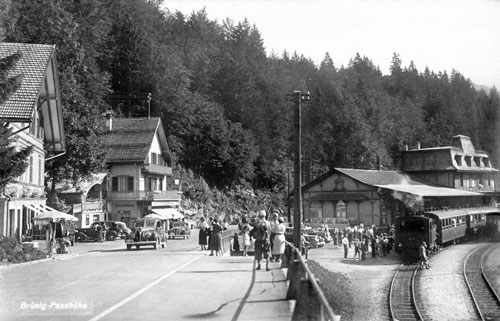
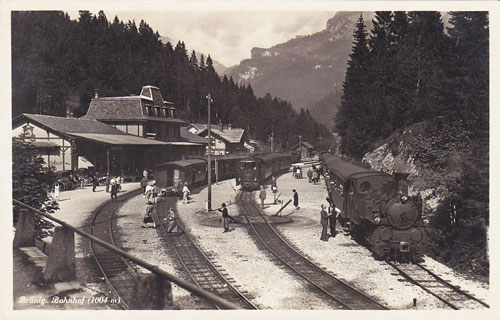
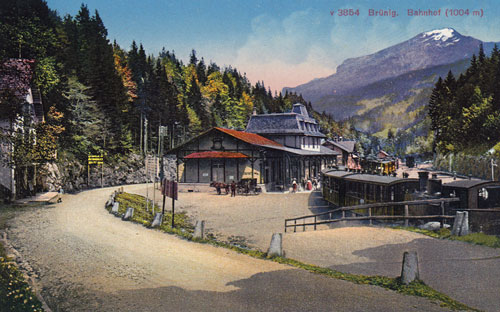
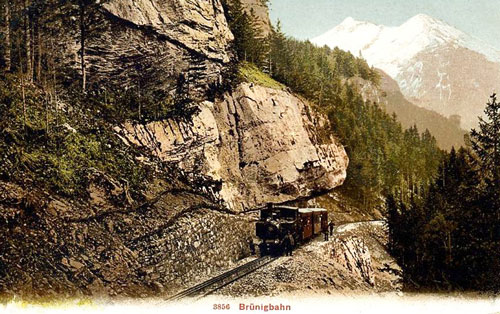
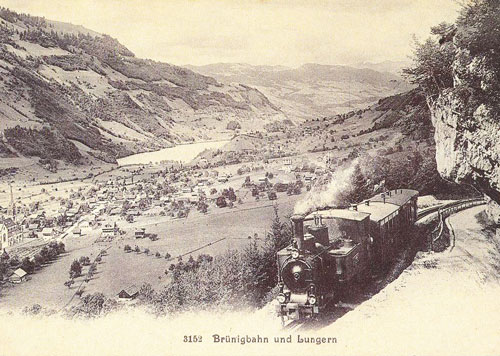
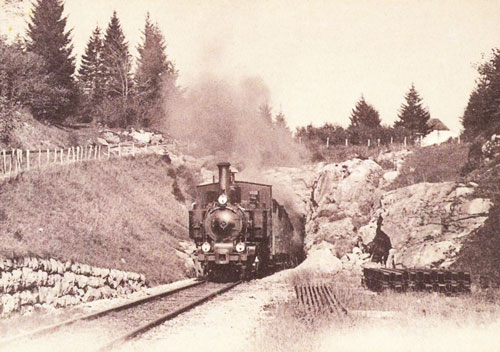
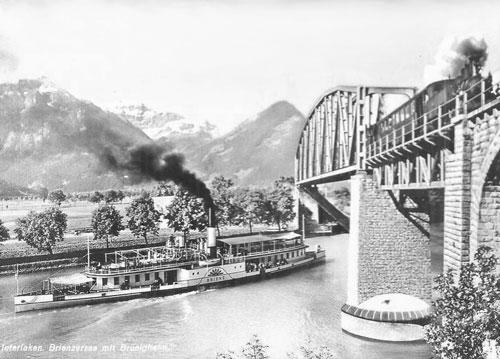
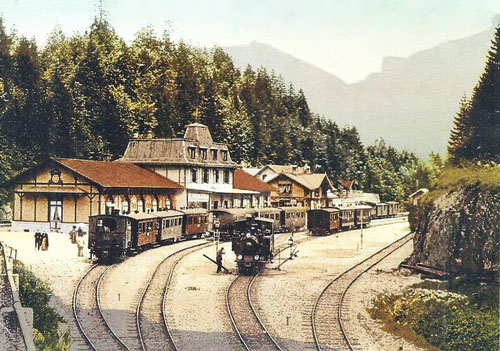
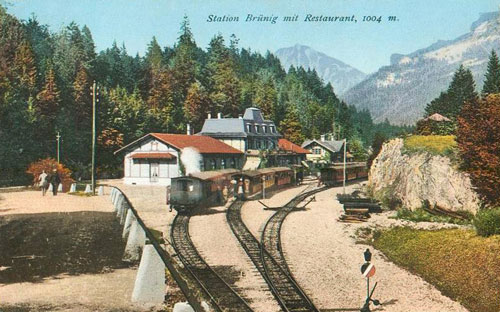
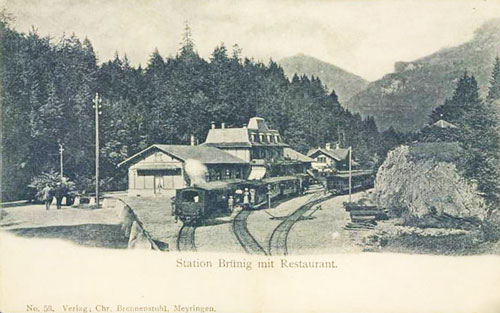

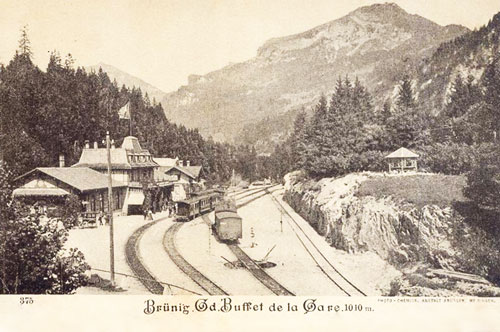
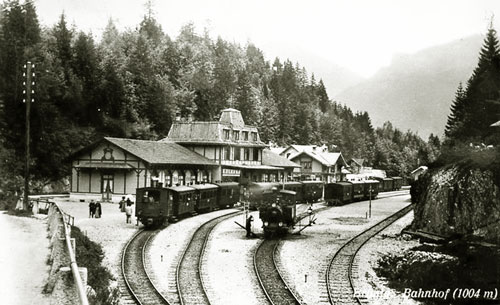
Ballenberg
Dampfbahn (BDB)
Three Brünig steam locos have been preserved and
operate stem trains on selected Sundays in the summer. The original
intention had been to run a regular link from Brienz with the countryside
museum at Ballenberg, but this has yet to be achieved. Instead the reduced
timetable of quite lengthy trips is operated between Interlaken Ost to the
Brünig summit and Giswil using the rack locomotive 1067. Adhesion loco 208
is also available to run on non-rack sections of the local metre gauge
railways. None of the local railways use compatible electrical systems so
the trains of different railways cannot run through onto other lines. This
obviously does not affect the the steam locos so 1067 can run beyond the
Brünig lines on the extensive narrow gauge network in the Bernese Oberland,
The BDB operate trains on request on the lines of the MIB up to
Innertkirchen and BOB to Grindelwald and Lauterbrunnen.
(Ref:
www.ballenberg-dampfbahn.ch)
Brünig Line Electric
Operation
The line was electrified in 1941 and 1942, using the
standard Swiss main line system of 15 kV 16⅔ Hz AC supplied by overhead
line. The electrification lead to a significant acceleration of services,
with typical through journey times reduced from over 3 hours to 2 hours.
In 1964, a junction was constructed at Hergiswil with the
Luzern–Stans–Engelberg Railway (LSE), and from that date trains of the LSE
used Brünig line tracks to reach Lucerne station. On 30 June 2004, the Swiss
Federal Council empowered the SBB to sell the Brünig line to the Zentralbahn
company, formed by the LSE, and which now owns both railways. The takeover
took effect on 1 January 2005.
In late 2012, a new tunnel route was opened between Kriens Mattenhof station
and the approaches to Lucerne station. The tunnel replaces a less direct
surface alignment, allowing the abolition of several congested level
crossings and the provision of double track. A new station, Lucerne
Allmend/Messe, built within the tunnel, serves the Swissporarena.
(Ref: Schmalspurparadies Schweiz by Scheers/Wall)
Official SBB photo of Deh 4/6 904 built SLM in 1941

Images of Deh 4/6 units 905, 906 & 909, built SLM in 1941
Photos: ©1984 Ian Boyle at Luzern
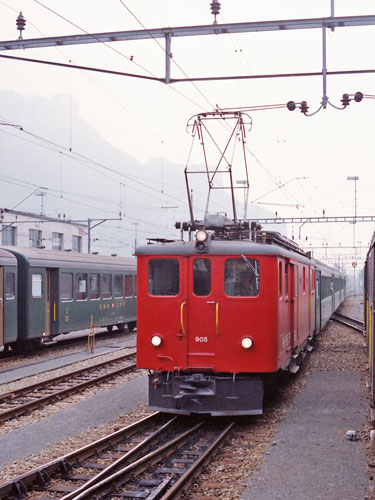
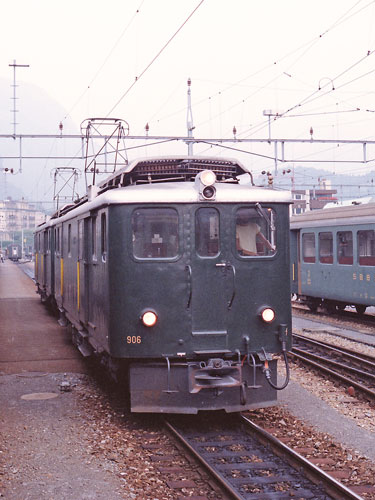
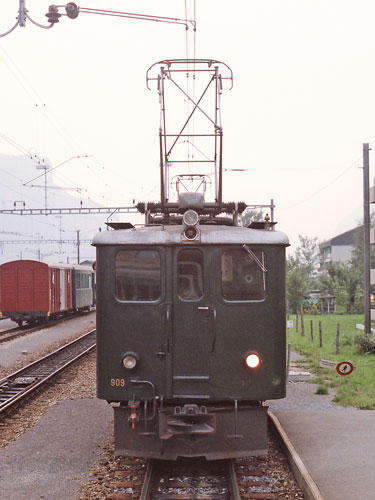
Official SBB photo of HGe 4/4 units 1992, built SLM in 1992
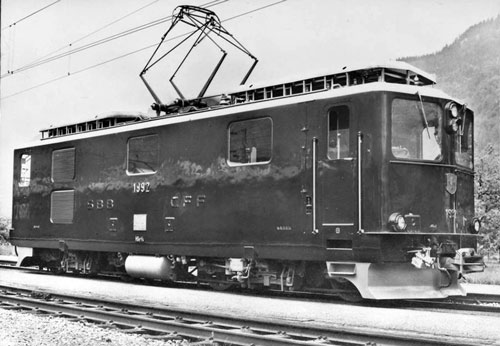
Images of HGe 4/4 units 1992, built SLM in 1992
Photos: ©1984 Ian Boyle at Luzern
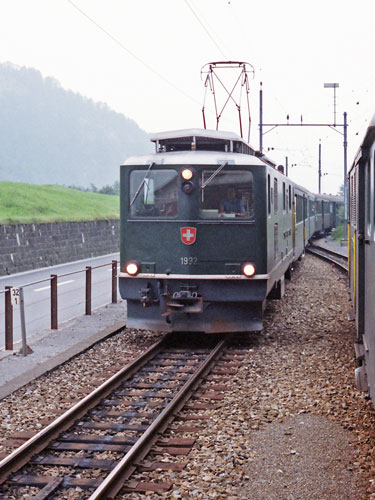
Luzern-Stans-Engelberg Bahn - LSE
The Luzern–Stans–Engelberg Bahn line is a Swiss metre
gauge rack railway that connects Luzern, via Hergiswil and Stans, to the
resort of Engelberg. The line was built by the Stansstad–Engelberg Bahn
(StEB), which became the Luzern–Stans–Engelberg Bahn (LSE) when the line was
extended to Luzern.
Today the line is part of the Zentralbahn railway company, which also owns
the Brünig line.
Photos of early LSE railcars at Engelberg and Stans
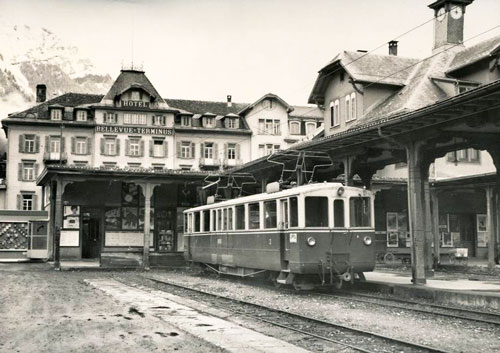
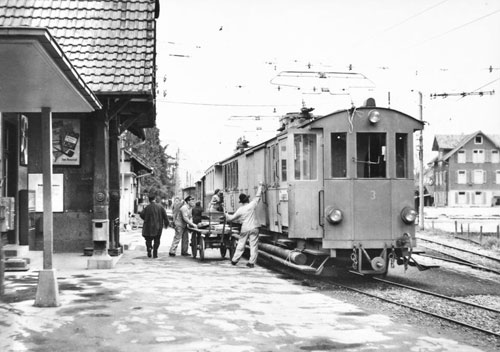
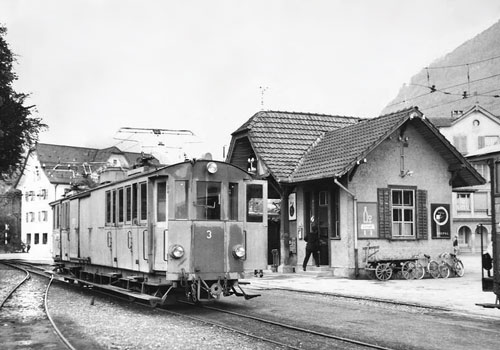
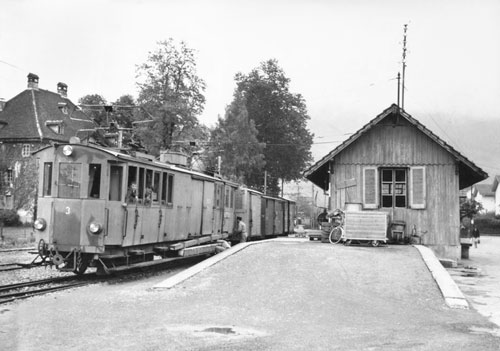
LSE BDeh140 rack/adhesion railcar No.5
Photos: ©1985 Ian Boyle at Luzern
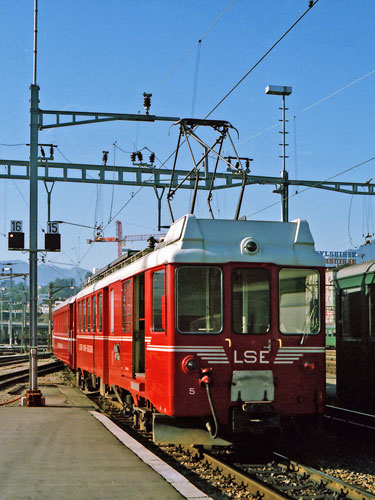
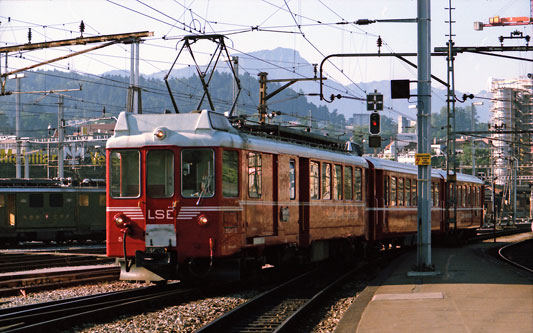
LSE driving trailers 27 and 30
Photos: ©1985 Ian Boyle at Luzern
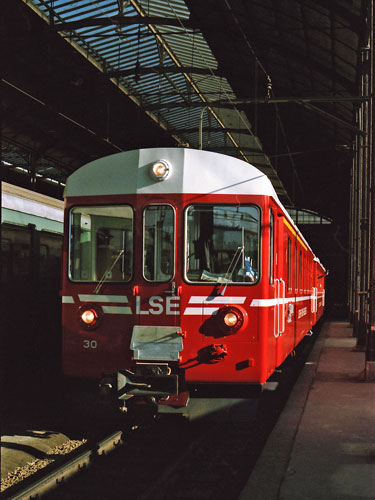
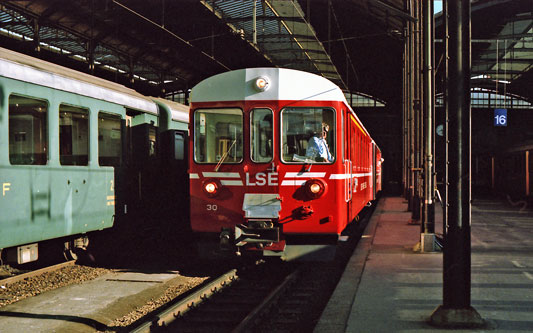
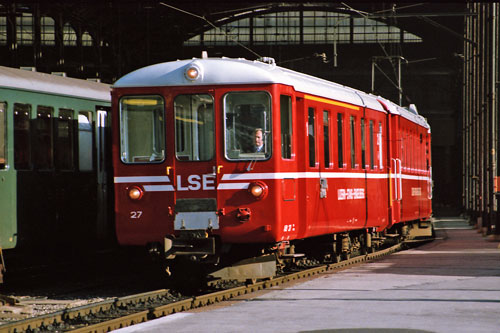
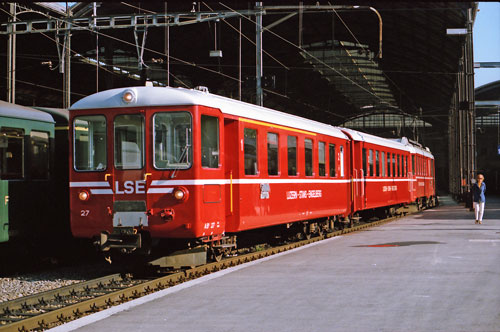
The Zentralbahn is a Swiss railway company that owns
and operates two connecting railway lines in Central Switzerland and the
Bernese Oberland. It was created on January 1, 2005, with the acquisition of
the independently owned Luzern–Stans–Engelberg Bahn (LSE), and the Brünig
line of the Swiss Federal Railways (SBB). The company has its headquarters
in Stansstad.
From 2004, the Zentralbahn began receiving deliveries from Stadler of ABe130
SPATZ adhesion-only EMU sets for use from Luzern to Stans & Giswil, plus
Interlaken Ost to Meiringen. SPATZ stands for Schmalspur Panorama
Triebzug.
In September 2009, Zentralbahn AG ordered four seven-car electric
rack-and-adhesion train sets (ADLER) and six three-car electric
rack-and-adhesion train sets (FINK) from Stadler Rail. The first seven-car
train was due to enter service on the Brünig route at the end of 2012. The
six three-car push-pull trains will be used as expansion modules for the
seven-car InterRegio trains, but can also be deployed on the valley lines.
The ten new trains should all be in service by autumn 2013.
















